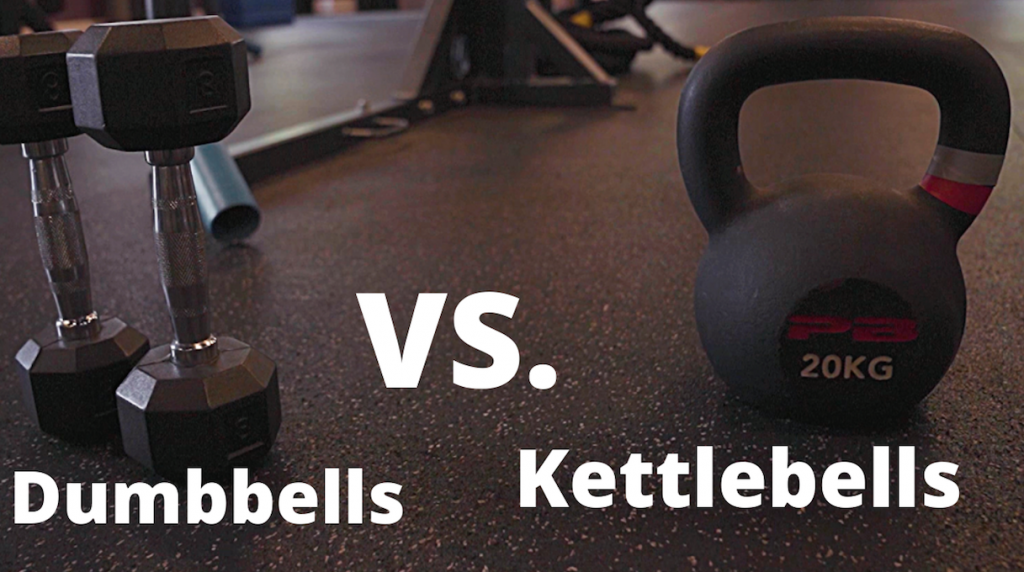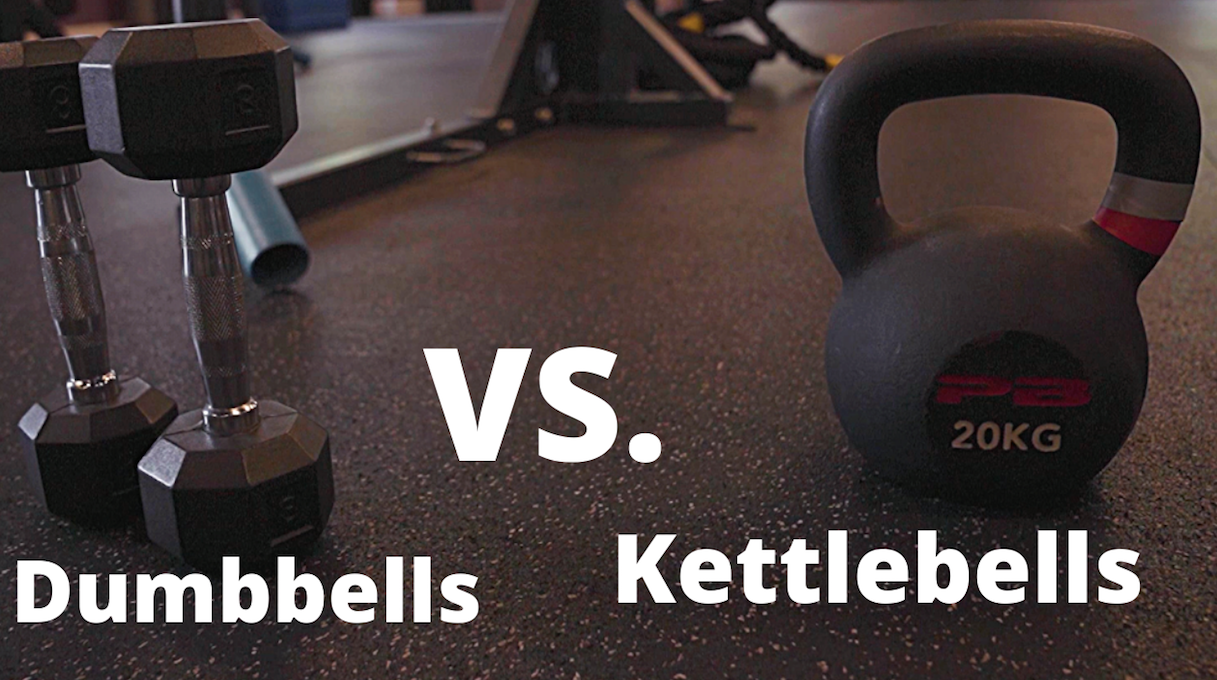
“To lift or not to lift?”
That’s a dumb question.
But WHAT to lift? Now that’s worthy of a discussion.
A search for “exercise equipment” on Amazon brings up over 40,000 product results.
Commercial gyms have dozens of machines for every muscle group.
We have more tools at our disposal than we’ll ever need in a lifetime of training.
Of course, we’ve known for generations that lifting free weights is key to the development of strength and fitness. And when it comes to free weights, we have 3 basic options – barbells, dumbbells, and kettlebells.
Of these, the dumbbell and kettlebell are most comparable. They are both fixed weights (not plate-loaded like the BB) and are generally designed to be used with one arm.
And so the obvious question…
Are kettlebells better than dumbbells?
It’s obvious that my brand and training style leans heavy on kettlebell training. You might now expect a treatise on the merits of lifting the mighty kettlebell over the hum-drum dumbbell.
But my allegiance isn’t to a tool. It’s to you and your goals and what’s practical.
Instead of making blanket statements, let’s examine some basic movements and see how the kettlebell and dumbbell differ in their application to those moves.
In this article, we’ll stick to the main upper-body lifts.
Overhead Press
Regardless of the type of weight, I’m a big fan of the 1-arm overhead press.
Most folks just don’t have shoulders that can tolerate heavy, consistent, bilateral overhead presses. By working one side at a time, we allow the body to move around in order to find its own sweet spot of stability.
I recommend beginning lifters start with the dumbbell press for two main reasons:
- The technique is relatively easy. Just curl a dumbbell to the shoulder and punch the sky. Boom, we’re lifting. With a kettlebell, we have to contend with the pressure against the forearm, the angle of the handle to the grip and the ability to keep a straight wrist.
- More weight options. The overhead (vertical) press is typically trained with a lighter weight than a horizontal lift like the bench press. The prime mover muscles are small and the standing position offers less mechanical advantage. The standard kettlebell set goes from 12 kg to 16 kg. This 33% jump (over 8 lbs) might not be appropriate for a beginner’s shoulders. Compare that to progressing through a full set of dumbbells in 2.5 – 5 lb increments.
Once the technical details are taken care of, the kettlebell press does have a few unique advantages.
When racked on the forearm, the center of mass of the kettlebell lies below and behind the point where the handle meets the heel of the hand. This can help you find a strong pressing “groove” as you work to keep the arm vertical.
The kettlebell can also be pressed in a bottoms-up position where the center of mass balances 6-8 inches directly above the grip. Again, you’ll have to call upon all your stabilizers (from the shoulders, to the core, to the legs) to maintain a vertical forearm and control the bell.
Front & Lateral Raises
Dumbbells are the natural choice for raises.
You could raise a kettlebell with a “pistol grip” for some added wrist work, or hold the horns in a front raise, but you’ll probably want to stick to the relatively light dumbbells for these.
Overhead Triceps Extension
Also known as the “French Press,” this lift is a wonderful triceps stretch and strengthener. You’ll need healthy, mobile shoulders for this one no matter what type of weight you’re using.
The dumbbell and kettlebell are pretty comparable here.
I do think the (cast-iron style) KB handle offers a slight advantage for the wrists. When the kettlebell is gripped firmly by the horns, the wrists stay in a neutral hammer position. Plus, there’s a bit of extra leverage work done as the bell bottom rotates from facing down to facing out.
Holding one end of a dumbbell with a diamond grip (handle between the opening of the thumbs and index fingers) will require some amount of wrist extension. Probably not a huge issue for most, but worth mentioning.
Bicep Curls
Ah, curls.
Probably the first exercise we ever do with weight and still the most fun.
Dumbbells really take the cake on bicep curls mostly because they can easily be held in a variety of grips and positions – wrists out, hammer, reverse, Zottman…
There are a few novel curl variations you can do with a kettlebell (pitcher, towel, and squeeze), but poundage presents a real limit here.
Bench & Floor Press
Most of the considerations from the overhead press apply to horizontal press variations as well.
Again, I recommend beginners start out with dumbbells if possible just for the ease of use.
1-Arm Rows
Heavy rows are key for a strong back. Because you’re using the large pulling muscle group of the upper body, you can handle more poundage in the row than any other upper body free-weight exercise.
For my dollar, the shape of the kettlebell offers two subtle advantages over the dumbbell.
First, the center of the weight lies directly below the handle. When you row a kettlebell, you don’t have to contend with ulnar and radial deviation (lateral wrist movement that can happen with heavy dumbbells).
Second, a kettlebell handle has high clearance from the ground – a foot, give or take, depending on the size and style of the bell. A dumbbell handle will sit much closer to the floor.
This all comes in handy when performing heavy bent-over rows the way I like to train them – with a dead-stop rest on the ground between reps.
Just lift it
Weight is weight no matter what we call it.
A training tool is only useful to the degree that it helps you find and express the intention you’re going for. Find that first and don’t put the cart before the horse.
